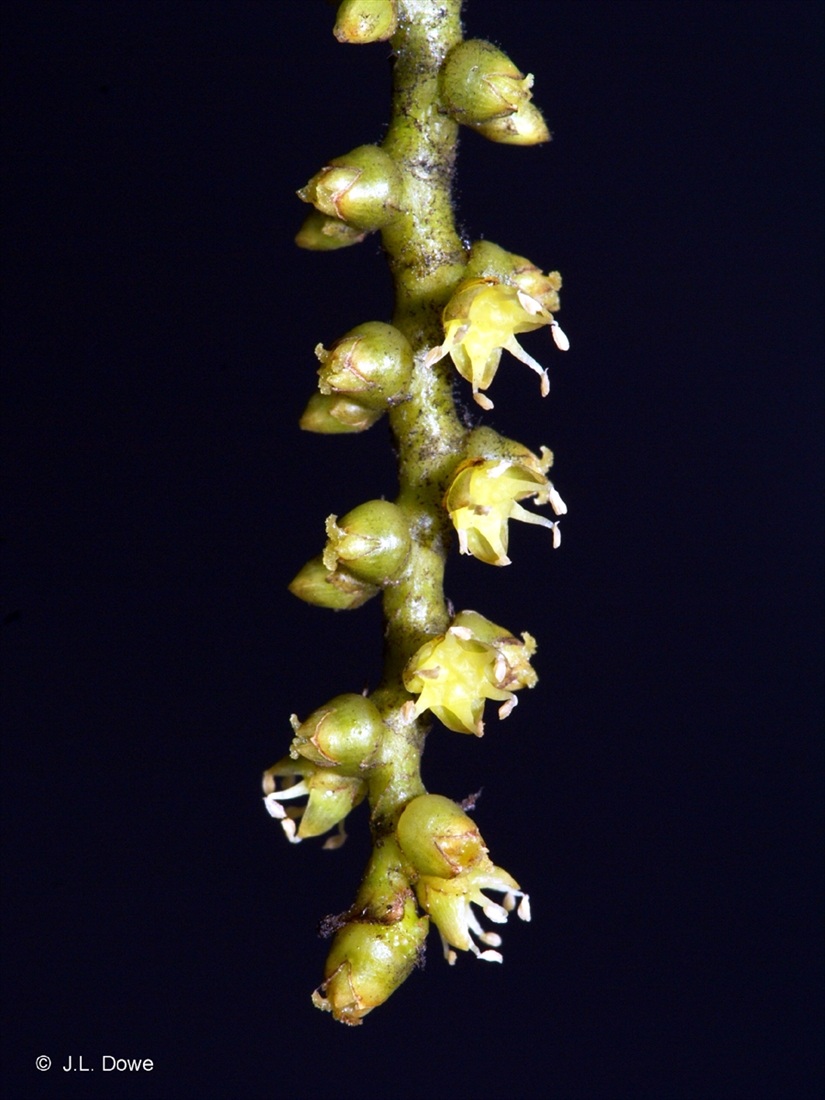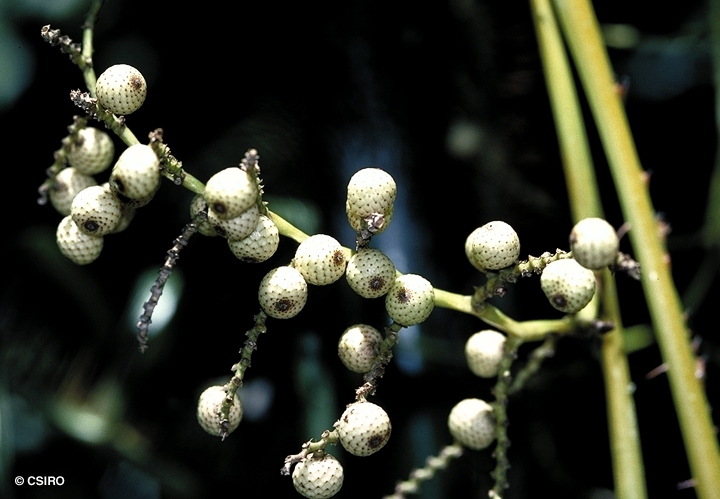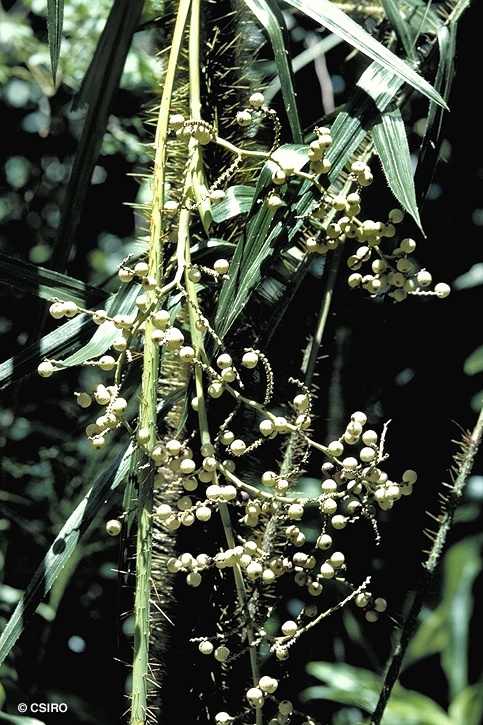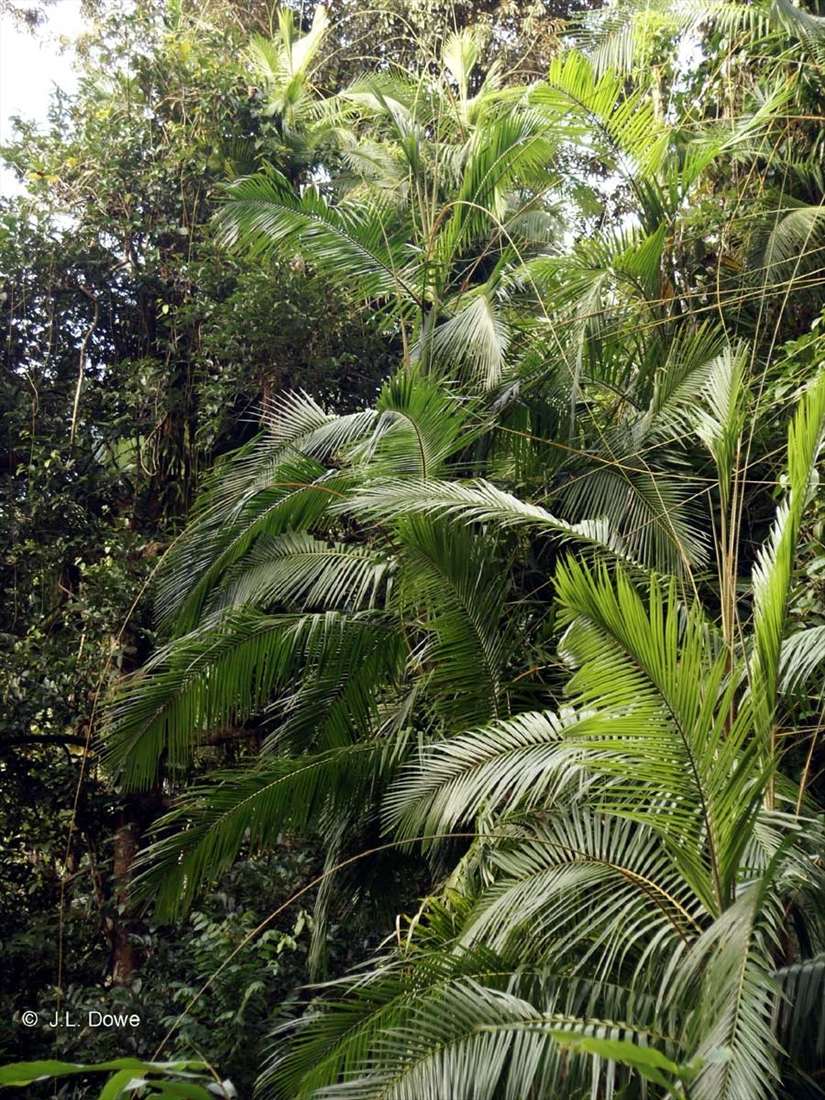Australian Tropical Rainforest Plants - Online edition
Calamus radicalis H.Wendl. & Drude











Wendland, H. & Drude, C.G.O. (1875) Linnaea 39: 195. Type: Australia, 35 miles N of Port Mackay [Tully River mouth]. [Probably near Russull River, southern slopes of Mt Bartle Frere].
Vicious Hairy Mary
Vine stem diameters to 3 cm recorded. Stem surface green, smooth and glassy. Vessels numerous, large and conspicuous, readily visible to the naked eye in stem transverse sections.
Compound leaves about 3 m long. Leaflets about 60-125 in each compound leaf. Leaflet blades linear, about 15-50 x 1-3 cm, sessile. Leaflet blades with spiny hairs present on the upper surface, underside mainly glabrous except for scattered broad-based spiny hairs, margins spiny. Leaflet blade margins armed with fine hair-like teeth. Compound leaf axis spiny on both the upper and lower surfaces, spines mainly straight on the upper surface, straight and recurved on the lower surface. Compound leaf petioles spiny. Compound leaf stem sheaths densely clothed in long spines (up to 5-6 cm long).
Male flowers: Inflorescence quite large, a panicle of spikes up to 3 m long, borne on the sheathing leaf bases opposite the compound leaf petioles. Basal part of the main axis of the inflorescence clothed in long (10-15 mm) needle-like spines. Flowers pleasantly perfumed. Outer tepals about 0.6-2 mm long. Inner tepals about 2-2.5 mm long. Staminal filaments about 1-1.5 mm long, fused to form a structure resembling a starfish (Asteroidea spp.). Anthers about 1 mm long. Female flowers: Inflorescence a large panicle up to 3 m long. Flowers paired, one flower of each pair caducous, sterile and male. Female flowers about 2 mm diam. Outer tepals fused for about half their length, being about 1.5 mm long overall. Inner tepals fused for about half their length, being about 2 mm long overall. Staminodes 6, fused to form a thin cup-shaped structure. Stigma 3-lobed.
Infructescence about 4 m long. Fruits globular or depressed globular, about 10-11 mm diam., clothed in scales which overlap from the apex. Perianth lobes persistent at the base. Seeds about 8-9 mm diam., enveloped in a fleshy green pericarp. Testa surface rugose. Endosperm very hard and oily. Embryo +/- bullet-shaped, about 1-1.5 mm long.
Two dissimilar cataphylls produced before the first true leaf. The first cataphyll tubular, about 6 mm long, sheathing the stem. The second cataphyll much longer than the first, also sheathing the stem, apex very pointed. First true leaf pinnate (appearing almost digitate) leaflets six, crowded on a short rhachis. Second leaf similar but with four or five leaflets. Leaflets spiny on the upper surface and the margins. Compound leaf petioles with a row of spines on each side and another down the back. At the tenth leaf stage: leaf pinnate with about 14 leaflets in all. Leaflets sessile, mainly glabrous except for scattered spines on the main veins on the upper surface. Venation longitudinal with about 3-5 veins visible. Petioles and axis of the compound leaf clothed in long straight spines. Petiole base densely clothed in straight spines (up to 10 mm long and clasping the stem. Leaflet blade margins finely toothed. Terminal leaflet deeply lobed.
Distinguishing features: leaf not terminating in a cirrus (whip-like extension armed with spines); apex of pinnae tapered, acuminate; leaf sheath armed with spines arranged randomly; leaflets with spines on upper surface veins; stems to 4 cm diameter; leaves to 3 m with 30-55 leaflets on each side of midrib.





